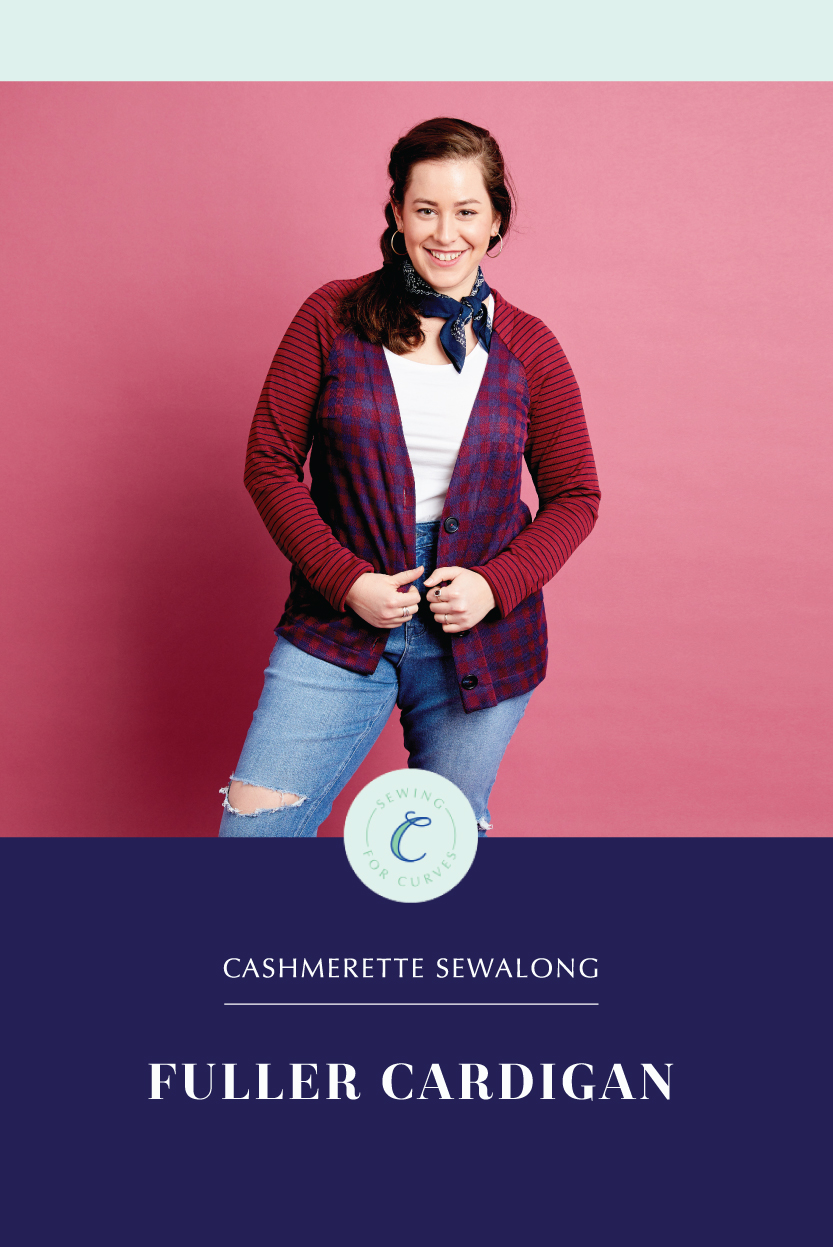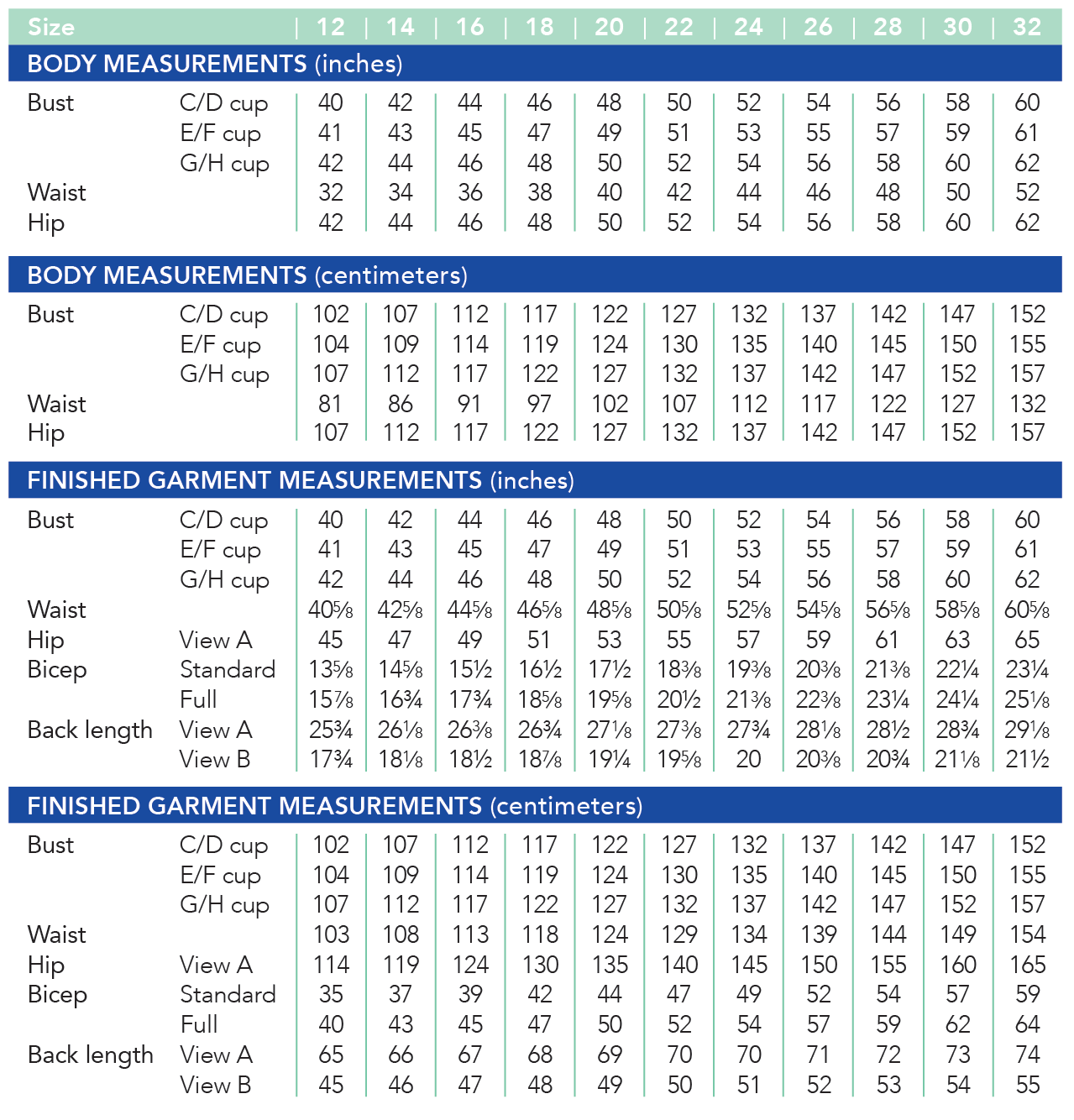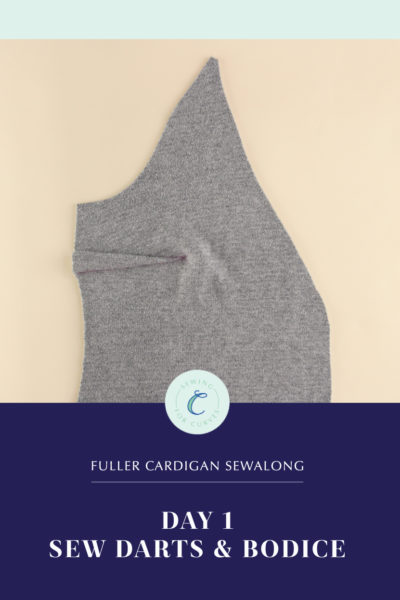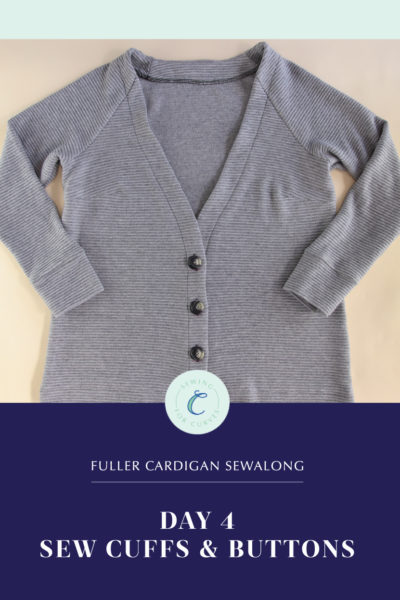Are you ready to sew your first Fuller Cardigan? Today, we’re going through our prep checklist to make sure our pattern and fabric are ready for us to start. Thanks for joining us!
(Want to download the fuller Fuller Cardigan? You can do that here.)

Okay, so you’ve loaded yourself up with inspiration from our Fuller cardi party and ready-to-wear cardigan roundup, and ordered your dream cardi fabric. What’s next?
First up, we need to pick our size. Thanks to the three cup sizes it’s more likely that you’ll fit in a “straight” Cashmerette Pattern than many other companies, but of course we all vary and chances are you may not be perfectly in one size. The good news is that sewing gives you tons of flexibility, and it’s easy to grade between sizes.
How to Choose Your Size
There are two measurement charts: one is the Body Measurement chart, and the other is the Finished Garment Measurements chart. The Body Measurement chart helps you choose your size based on what numbers you get when you measure your body with a tape measure—it has numbers for your bust (around the fullest part), waist and hip.
(Not sure how to measure yourself? We’ve got some helpful tips for finding your waist and why you should measure yourself when sitting.)
The Finished Garment Measurements chart shows you the size of the actual sewn garment. The difference between that and the Body Measurement chart is called “ease”, and it’s the amount of extra room or stretch in the garment that the designer recommends for the clothes to fit well and allow movement.
Generally, you want to start by comparing your measurement with the body measurement chart. However, if your measurements are between sizes you can take a look at the Finished Garment Measurements chart to see if you can fit in just one.

For the Fuller Cardigan—as with all Cashmerette patterns—the best bet is to start with your bust measurement. You should use your full bust measurement, which is around the fullest part of your bust. Because of the cup sizing, you may find you could fit in two different bust sizes. In that case you want to pick the overall size that’s closest to your waist size. So for instance, if your bust is 44″, you could theoretically be a 14 G/H or a 16 C/D. Which one should you pick? Take a look at the waist measurement–if yours is closer to 34″ (size 14), then go with the 14 G/H. If yours is closer to 36″ (size 16), then go with the 16 C/D.
Don’t fret if the cup size doesn’t match up with your bra size–there is so much variation in bra sizing that it’s not possible to perfectly line them up. Use your actual full bust measurement and you’ll be fine.
Grading Between Sizes
If your bust, waist, and hip measurements end up in many different sizes, you may want to grade between sizes. There is a good bit of wearing ease in the waist of the Fuller Cardigan, so if your waist is less than a few inches bigger than the measurement according to your bust size, you don’t need to grade up unless you want more ease.
If you’re sewing View B, the fit at the waist is somewhat boxy (although it has the appearance of being more fitted if you’re wearing it with the a fit-and-flare dress, like Jenny is on the cover). If you want a more fitted look, simply grade down two sizes. Learn more about how the Fuller Cardigan should fit here.
For a run-down of how to grade between sizes on pattern like the Fuller, check out this tutorial here.
Still not sure what size to use? You can write to us here for additional fitting advice, or consider signing up for the Cashmerette Fit Clinic!
Preparing the Pattern and the Fabric
Now that we’ve chosen our size and graded if necessary, it’s time to prepare our pattern and fabric so that we’ll be all ready to sew next time!
Here’s our fabric prep checklist:
- Wash and dry your fabric to make sure it’s pre-shrunk and you’re not going to get any nasty surprises later!
- Press your fabric so it’s nice and flat. Check to see if you get any iron shine when you press the right side. If so, you’ll want to use a press cloth when pressing between steps.
- If this is your first time making a Fuller, we recommend using an inexpensive fabric that has similar weight and stretch to your final fabric, in case further adjustments are needed.
And here’s what you need to do to prepare your pattern:
- If you’re using the PDF pattern and are printing your PDF pattern at home, you’ll need to print and assemble it. Here are some pointers to help you. If you want to get it printed, here are some suggestions.
- Either cut or trace off your pattern pieces. If you’re using a paper pattern, making adjustments, or are going to make any other sizes in the future, we definitely recommend tracing.
Finally, it’s time to cut into our fabric!
- Cut all pieces, following the layout diagrams in the pattern. Don’t forget to also cut the interfacing pieces!
- Transfer all the markings to the fabric. For the notches, make a little snip into the fabric within the seam allowance (so no more than 1/4″ / 6mm).
Apply the Interfacing
We’re almost ready to sew! All that’s left to do is apply the interfacing. On the wrong side of the facing pieces, apply lightweight fusible interfacing following the manufacturer instructions to the front and back facing pieces.
Made it this far? Give yourself a pat on the back—the hard part is over and now comes the sewing! Check back later this week when we get started sewing our Fullers—you’ll be amazed at how quickly it comes together!
We want to see your creations, whatever stage of the process you’re at! Tag your makes with #FullerCardigan on social media so we (and the whole sewing community) can cheer you on to the finish line!




